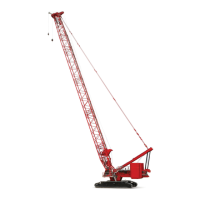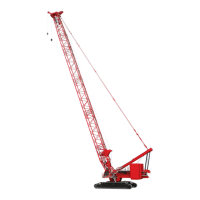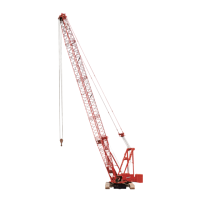Manitowoc Published 11-22-17, Control # 257-02 8-9
MLC300 SERVICE/MAINTENANCE MANUAL UNDERCARRIAGE
CARBODY JACKS
See Figure 8-4 and Figure 8-5 for the following descriptions.
The carbody jacks are controlled by the setup remote
control.
Setup Remote Control
The setup remote control communicates with the CCM-10
control module via the controller area network bus (CAN
Bus). The crane control modules use the CAN Bus to
communicate with each other.
To operate the setup remote, it must be turned on as
instructed in the MLC300 Operator Manual.
Neutral
When the setup remote is not transmitting:
• Pump 3 hydraulic flow through system B (right valve
assembly) decreases.
• The isolation valve B shifts to neutral to block pump flow
to the carbody jack solenoid valves.
• The carbody jack solenoid valves shift to neutral to block
pump flow to the carbody jacks.
• The counterbalance valves lock the jacks in position.
Load Holding
If pressure is lost to either end of a jack cylinder, the
counterbalance valves shift to the closed position, causing
the check valves to trap the oil in the jack cylinder and lock it
in position.
Lower (retract jack)
When a lower (retract jack) command is initiated by the setup
remote, the setup remote receiver communicates the retract
command to the CCM-10 and IOC30 control modules via
CAN Bus C. The following then occurs:
• The CCM-10 control module increases the pulse-width
modulation (PWM) current to pump 3 to increase system
B hydraulic flow.
• The IOLC30 control module sends 24 V
DC
to the side A
solenoid on the system B isolation valve, energizing the
solenoid. The valve spool shifts to a position that routes
hydraulic fluid to the carbody jack solenoid valves.
• The CCM-10 control module relays the retract command
to the CCMB11 and IOSB22 control modules via CAN
Bus B. The CCMB11 and IOSB22 control modules then
send 24 V
DC
to the corresponding solenoid on the
selected carbody jack valve, energizing the solenoid.
The valve spool shifts to a position that routes hydraulic
fluid through an orifice, then to the rod end of the
counterbalance valve.
• At the counterbalance valve, hydraulic fluid flows
through the rod end check valve and into the rod end of
the jack cylinder. At the same time, pilot pressure opens
the valve at the barrel end of the counterbalance valve.
As hydraulic fluid fills the rod end of the jack cylinder, the
rod retracts. This action forces hydraulic fluid out of the
barrel end of the jack cylinder, through the open valve,
and back to the tank.
Raise (extend jack)
When a raise (extend jack) command is initiated by the setup
remote, the setup remote receiver communicates the extend
command to the CCM-10 and IOC30 control modules via
CAN Bus C. The following then occurs:
• The CCM-10 control module increases the PWM current
to pump 3 to increase system B hydraulic flow.
• The IOLC30 control module sends 24 V
DC
to the side A
solenoid on the system B isolation valve, energizing the
solenoid. The valve spool shifts to a position that routes
hydraulic fluid to the carbody jack solenoid valves.
• The CCM-10 control module relays the extend
command to the CCMB11 and IOSB22 control modules
via CAN Bus B. The CCMB11 and IOSB22 control
modules then send 24 V
DC
to the corresponding
solenoid on the selected carbody jack valve, energizing
the solenoid. The valve spool shifts to a position that
routes hydraulic fluid to the barrel end of the
counterbalance valve.
• At the counterbalance valve, hydraulic fluid flows
through the barrel end check valve and into the barrel
end of the jack cylinder. At the same time, pilot pressure
opens the valve at the rod end of the jack cylinder. As
hydraulic fluid fills the barrel end of the jack cylinder, the
rod extends. This action forces hydraulic fluid out the rod
end of the jack cylinder, through the open valve, and
back to the tank.
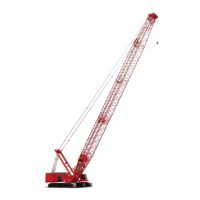
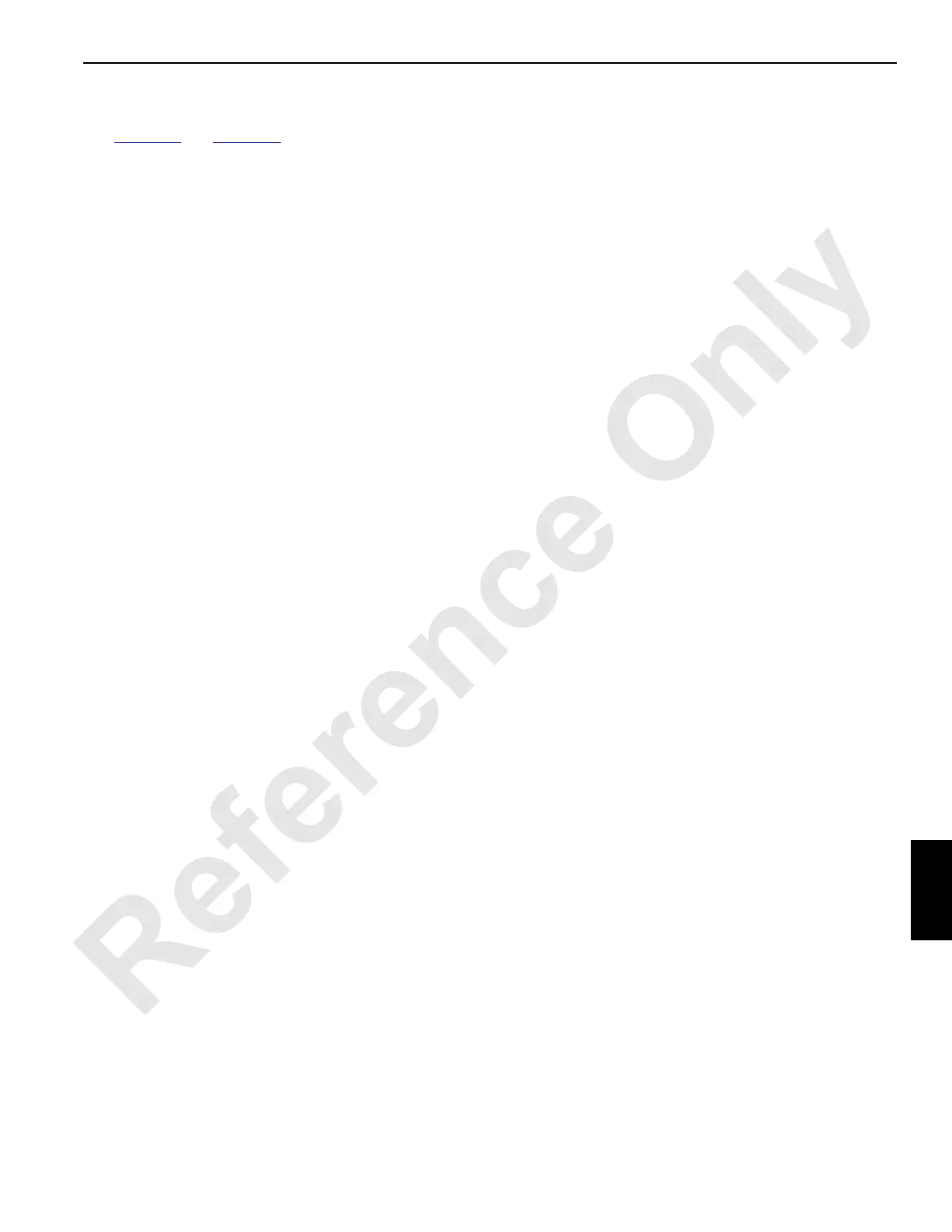